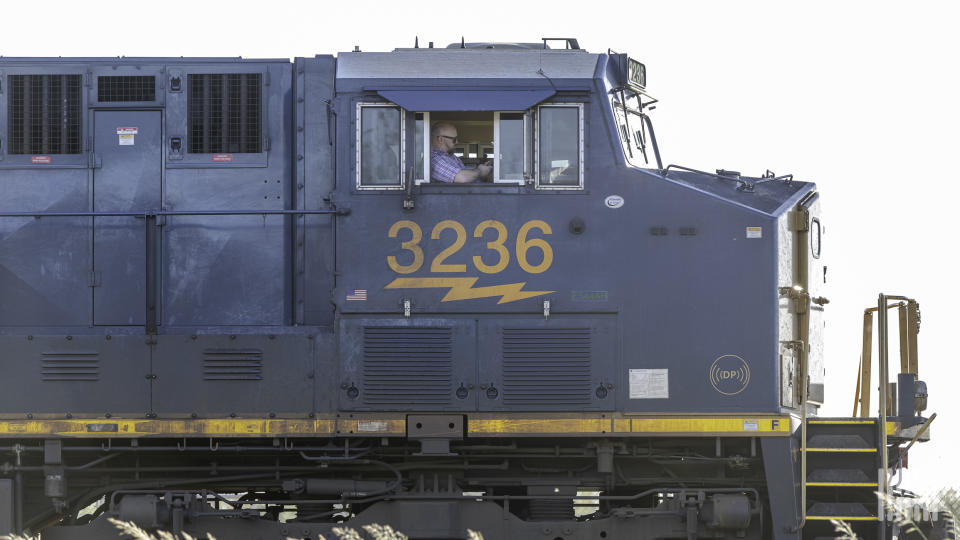Rail union calls for more extensive conductors training following 2 deaths

Following two recent deaths involving conductor trainees, the union representing train conductors is calling for more stringent training than what’s being offered now at the freight railroads, according to an internal safety advisory produced by the union.
The call for action by the International Association of Sheet Metal, Air, Railroad and Transportation Workers – Transportation Division (SMART-TD) was spurred by the two deaths of conductor trainees that occurred within 60 days of each other this summer. Both fatalities happened at Eastern U.S. Class I railroad CSX (NASDAQ: CSX).
“Our trainees are dying. I appreciate the [Federal Railroad Administration] putting out a list of recommended fixes to this problem in their Safety Bulletin, but suggestions aren’t going to keep my people alive. It is time for actions and time for enforcement against these unsafe practices,” SMART-TD President Jeremy Ferguson said in a Wednesday release. Ferguson was referring to a safety bulletin that the FRA put out on Aug. 16 in response to the recent trainee fatalities as well as to subsequent reports involving other trainees.
CSX, the National Transportation Safety Board and others are still looking into what caused the incidents, but the Aug. 16 FRA safety bulletin suggests that at least one of the incidents occurred when a conductor trainee was crushed between a rail car and locomotive during a shoving movement at a rail yard.
The union said it created its own internal advisory to promote dialogue between conductors and their trainees.
“Training in the railroad industry is being rushed. As trainees, you are not being properly exposed (while in a controlled environment) to the hazards you will encounter once in the field. And to the contrary, conductors have no knowledge of your experience nor the progression of your training timeline. As such, we all need to work together to overcome the shortfalls of the carrier’s training programs,” SMART-TD’s safety advisory said.
According to SMART-TD, FRA’s safety bulletin calls upon railroad companies to identify areas where conductors might be at risk of coming into contact with buildings, equipment of rail cars and locomotives on adjacent tracks; ensure they are providing adequate training to those charged with overseeing conductor trainees; and determine what level of experience a conductor should have to qualify as an instructor.
Following the fatalities, CSX called conductor trainees back to their home terminals for additional training.
Prior to the second fatality that occurred at a rail yard in Cumberland, Maryland, on Aug. 7, CSX and SMART-TD had announced on July 31 that they would be working together to enhance the conductor trainee program at CSX by adding an extra week to the program.
“While some railroads are making positive changes, the fact is more needs to be done. We will continue to work diligently to see that appropriate action is taken and adequate change is made to demand and require a training program that is robust and sufficient enough to ensure the safest course. Until then, safety is on us,” said SMART-TD’s safety advisory.
According to SMART-TD’s advisory, the deficiencies in the conductor trainee programs stem from how the programs are set up. Trainees may be paired with conductors who themselves have less than a year of experience in the field, it said.
There is also a lack of consistency in the on-the-job training process, SMART-TD said.
“Because there is no meaningful communication between conductors that have been assigned a trainee, there is no record or consideration of tasks experienced by the trainee while training in the field. This equates to no record of repetition or experience when it comes to the in-the-field experiences the trainee has been exposed to. The result is the unfortunate inability to reinforce areas of needed focus and/or introduction to practices that may not otherwise be available on other job assignments,” SMART-TD’s safety advisory said.
SMART-TD’s advisory also strongly encouraged conductors and trainees to stop a task or a movement if a conductor or trainee feels that safety might be in jeopardy.
The union said the deficiencies in current training programs are an effect of precision scheduled railroading, an operational method that the Class I railroads deployed to streamline operations and cut costs.
“I’ve got two conductor trainees, both in the same state working for the same carrier whose lives have been cut short. The current condition of all railroad training programs is clearly in need of scrutiny. SMART-TD is not prepared to lose more of our men and women while we sit around and wait for a palatable solution,” Ferguson said.
Subscribe to FreightWaves’ e-newsletters and get the latest insights on freight right in your inbox.
Click here for more FreightWaves articles by Joanna Marsh.
Related links:
The post Rail union calls for more extensive conductors training following 2 deaths appeared first on FreightWaves.
